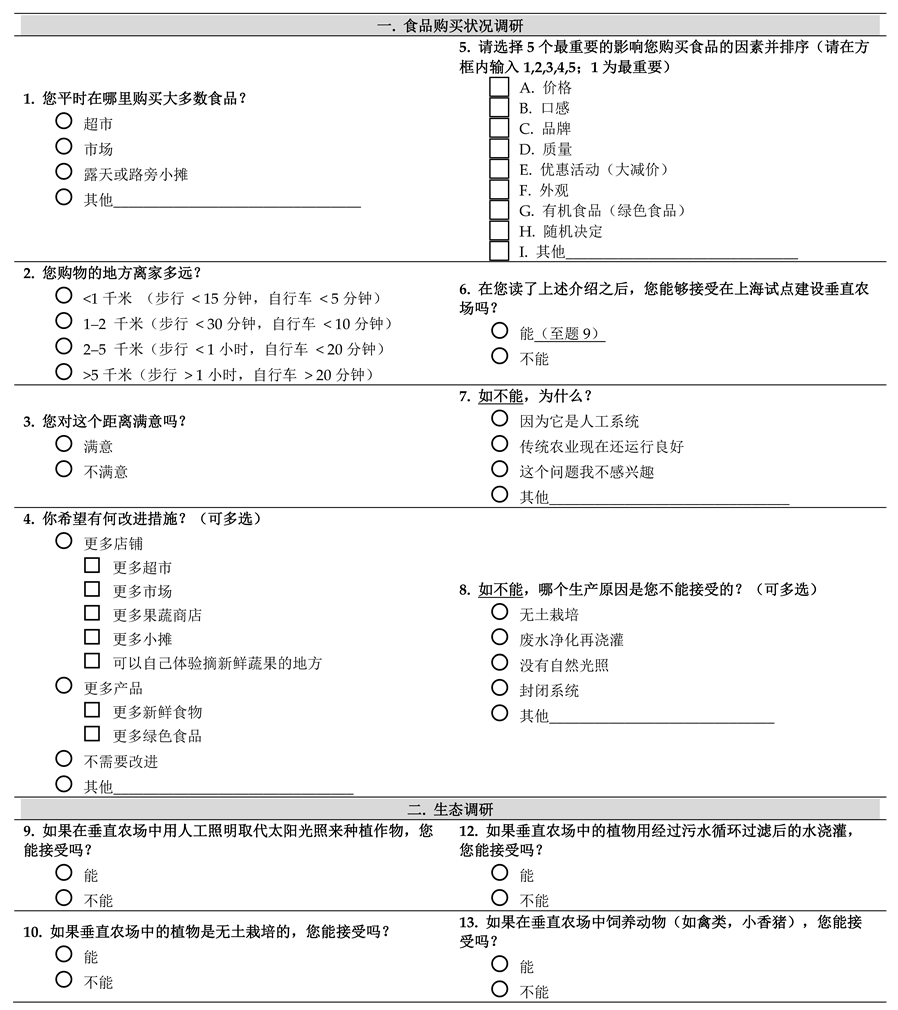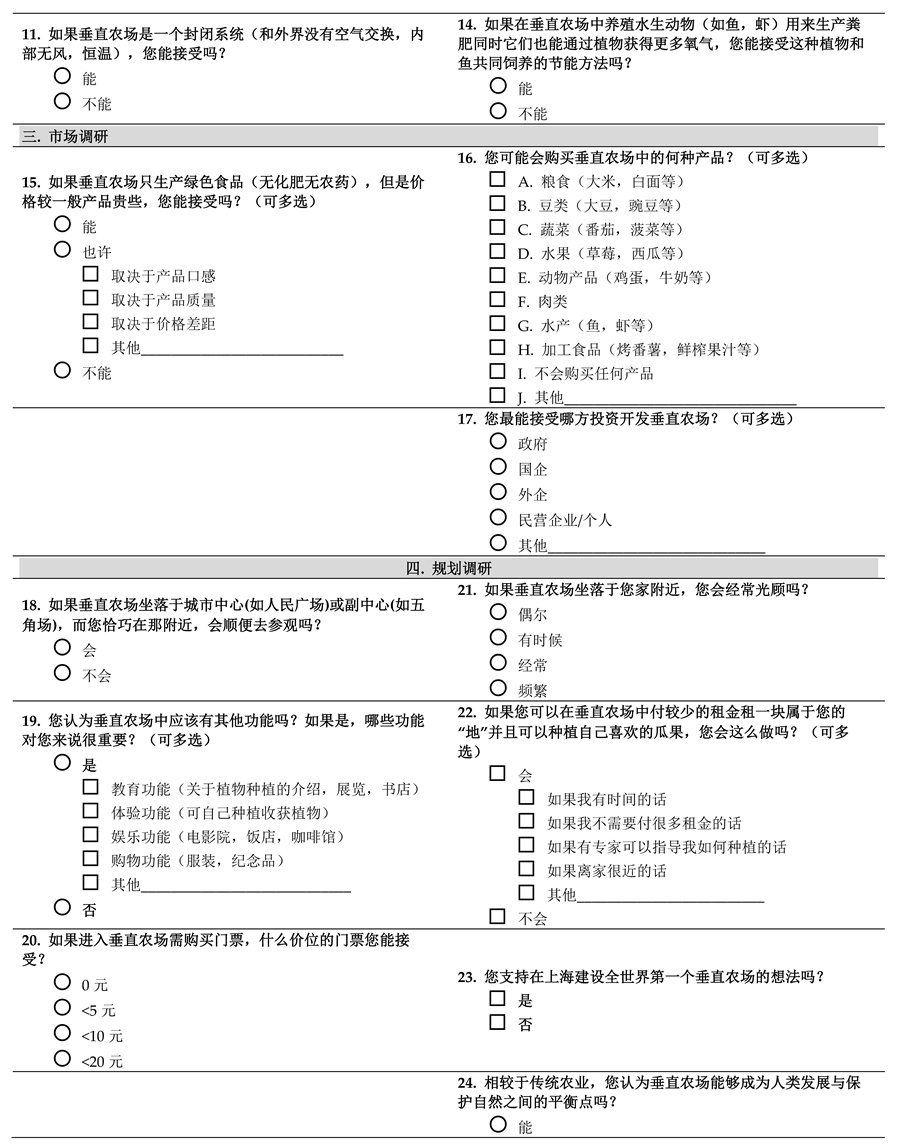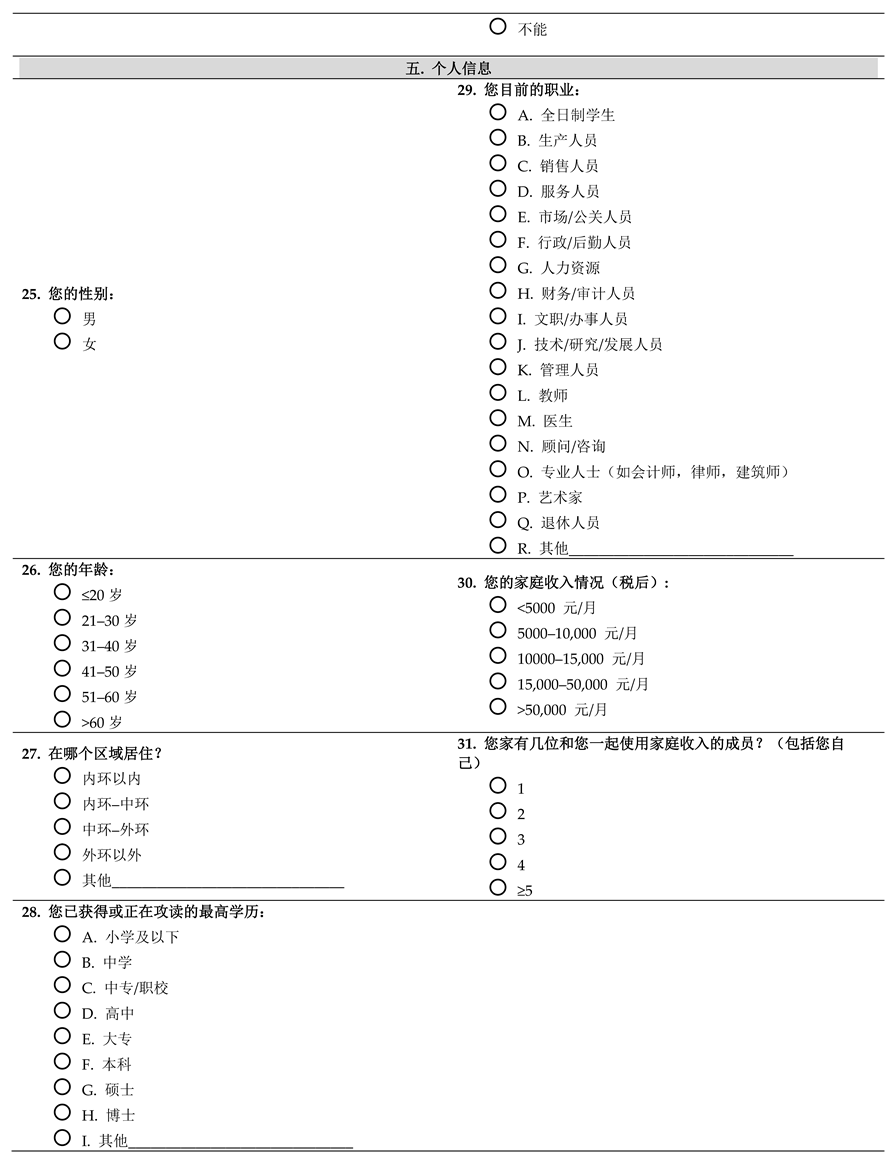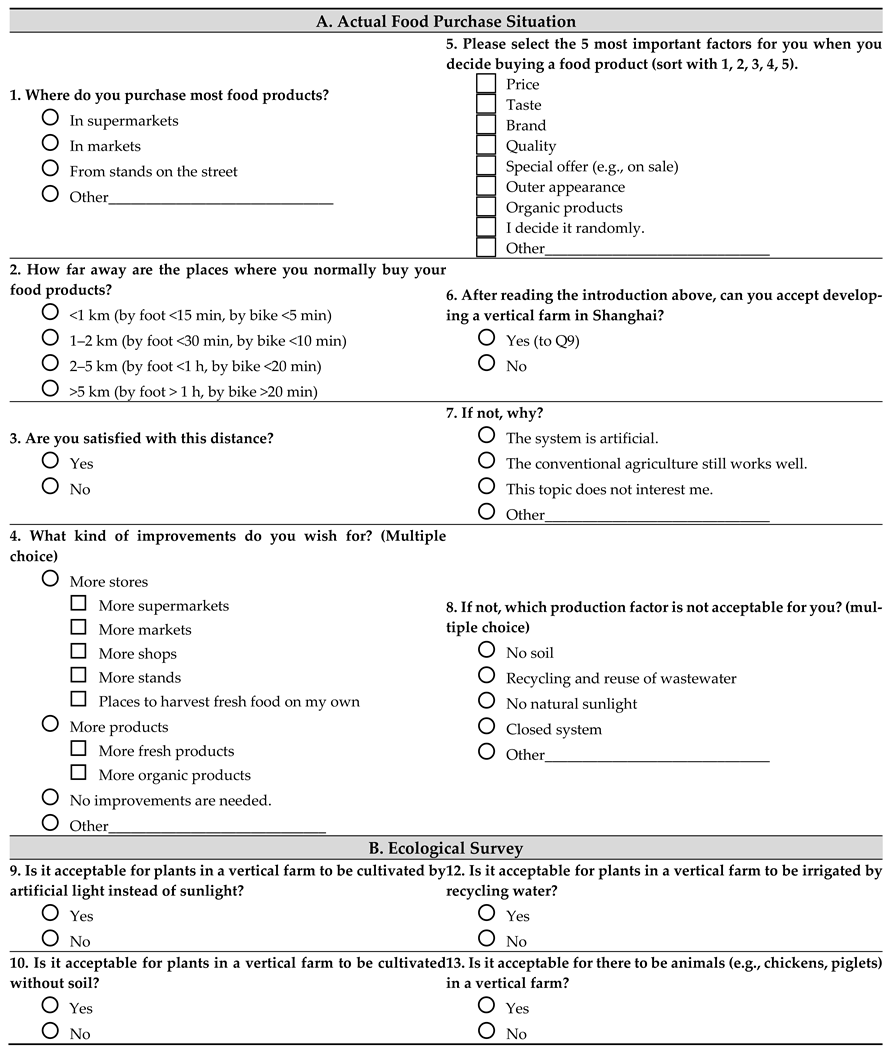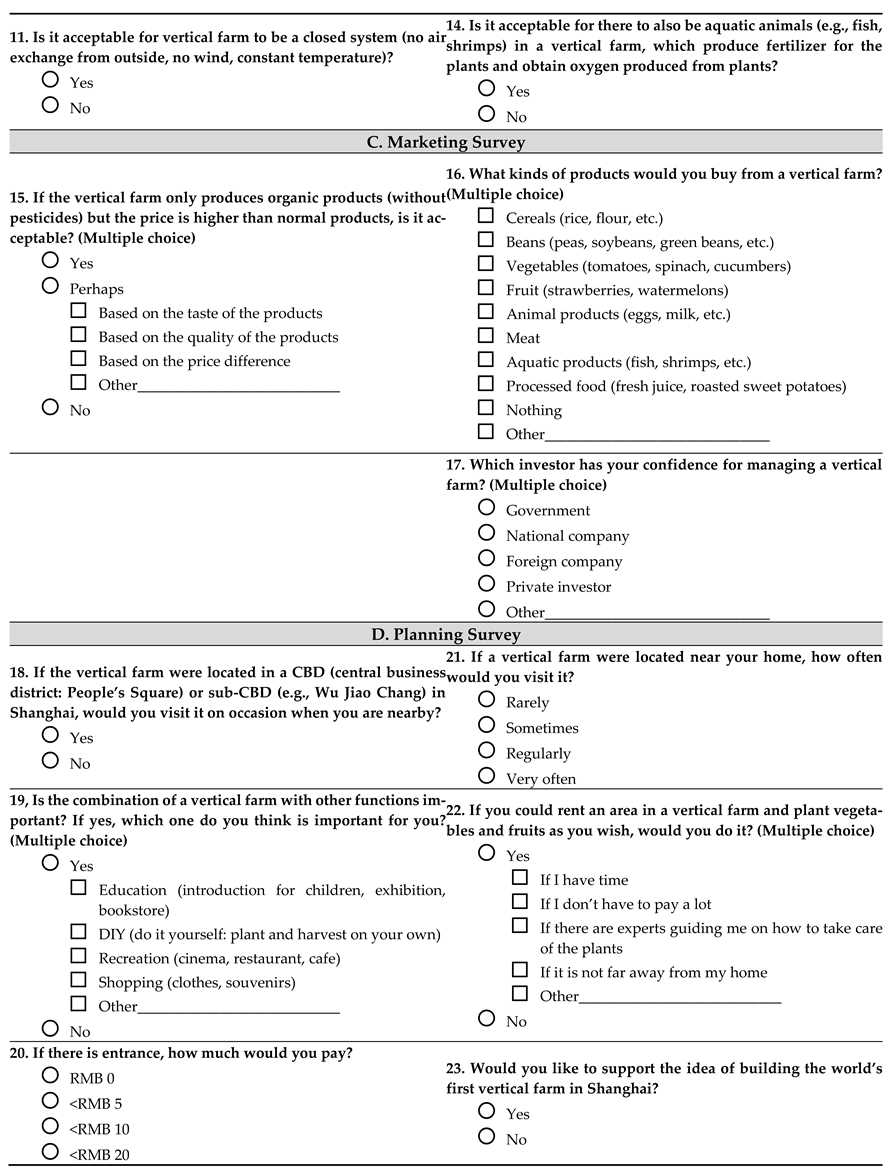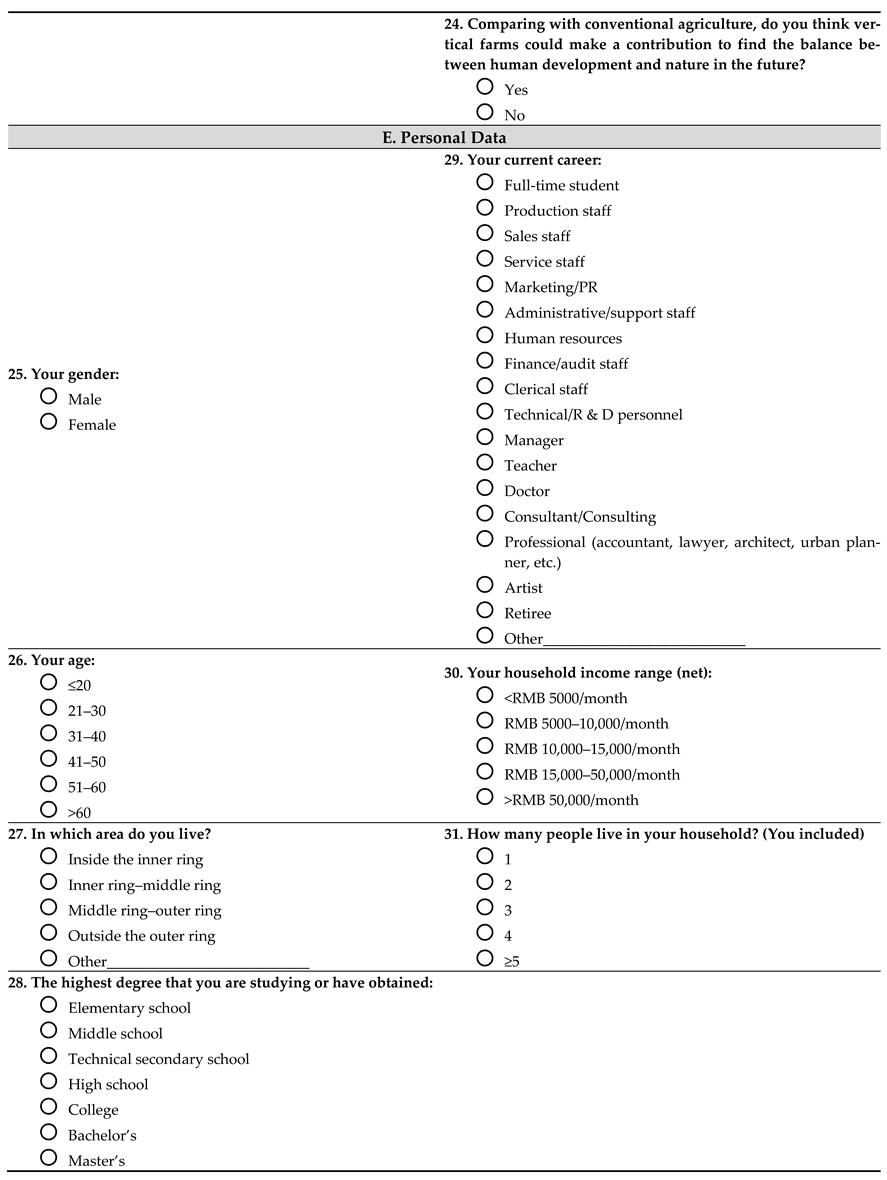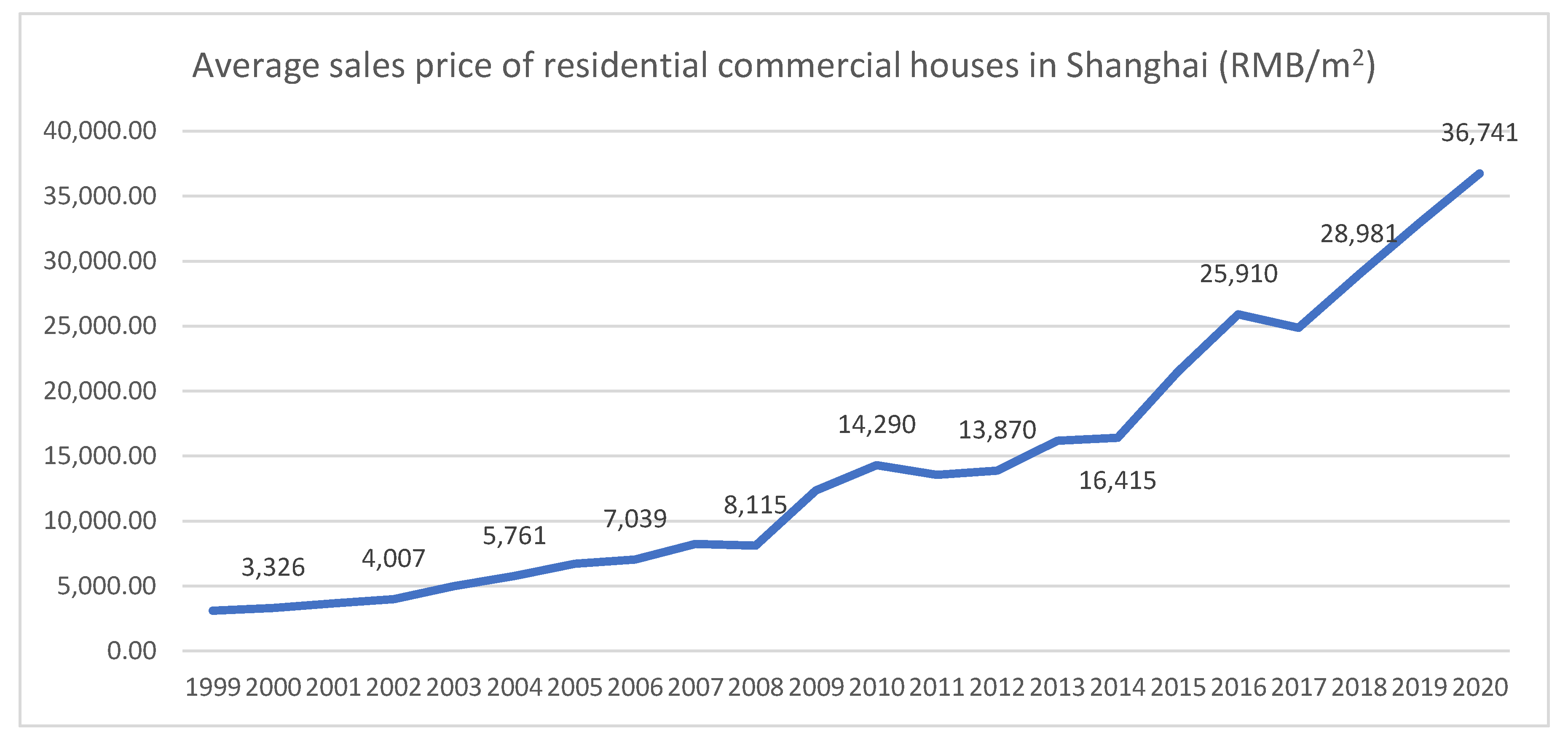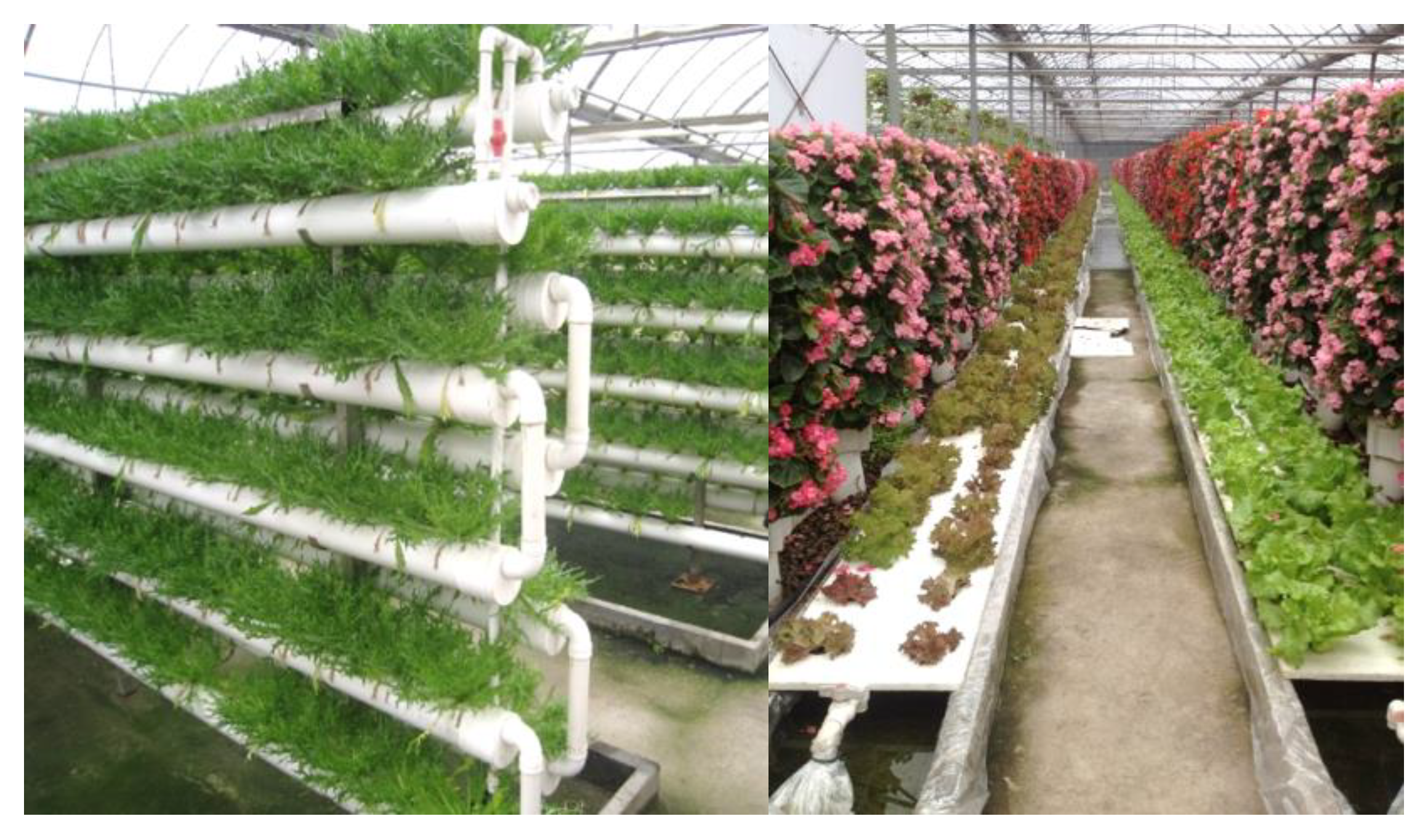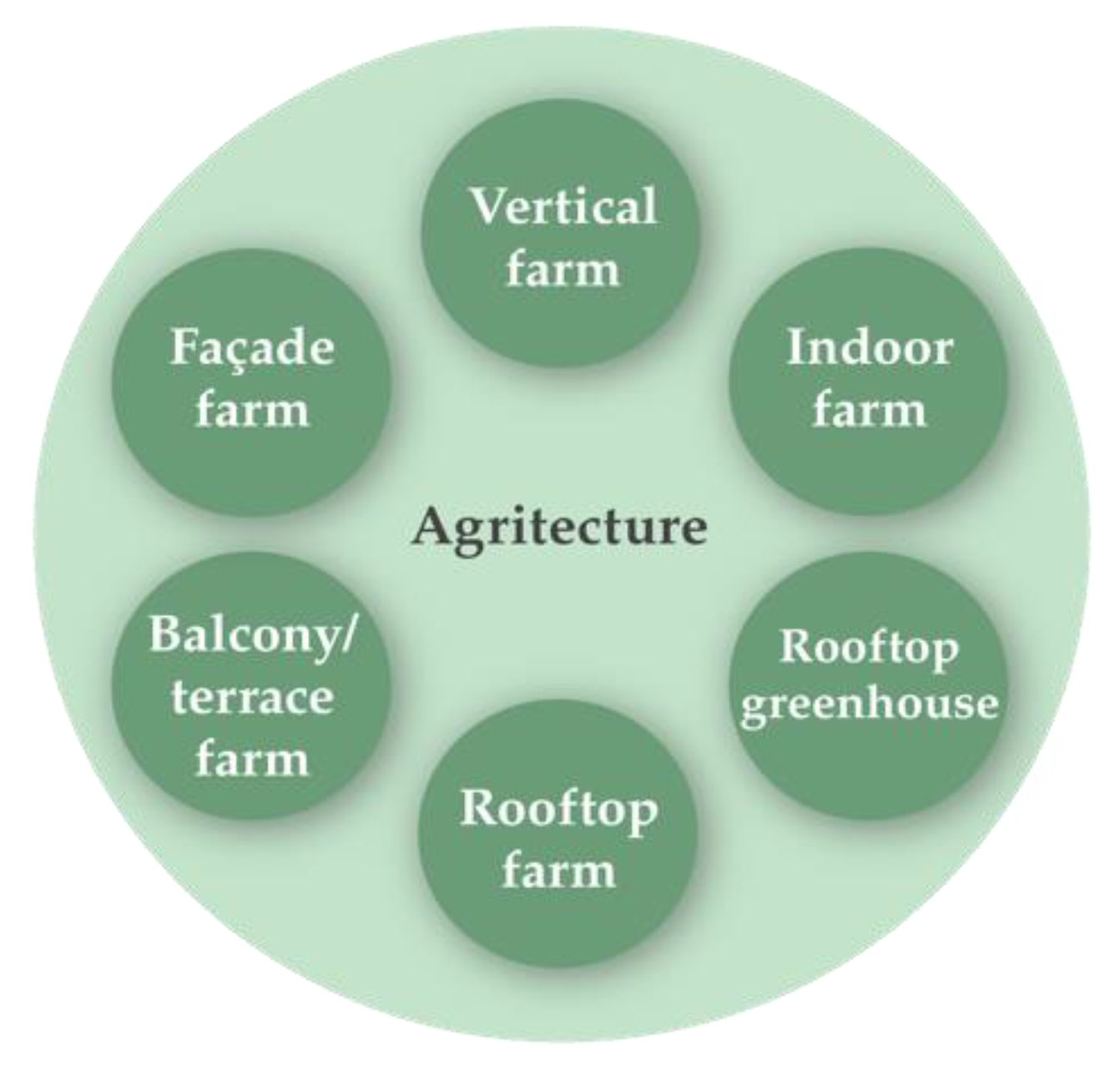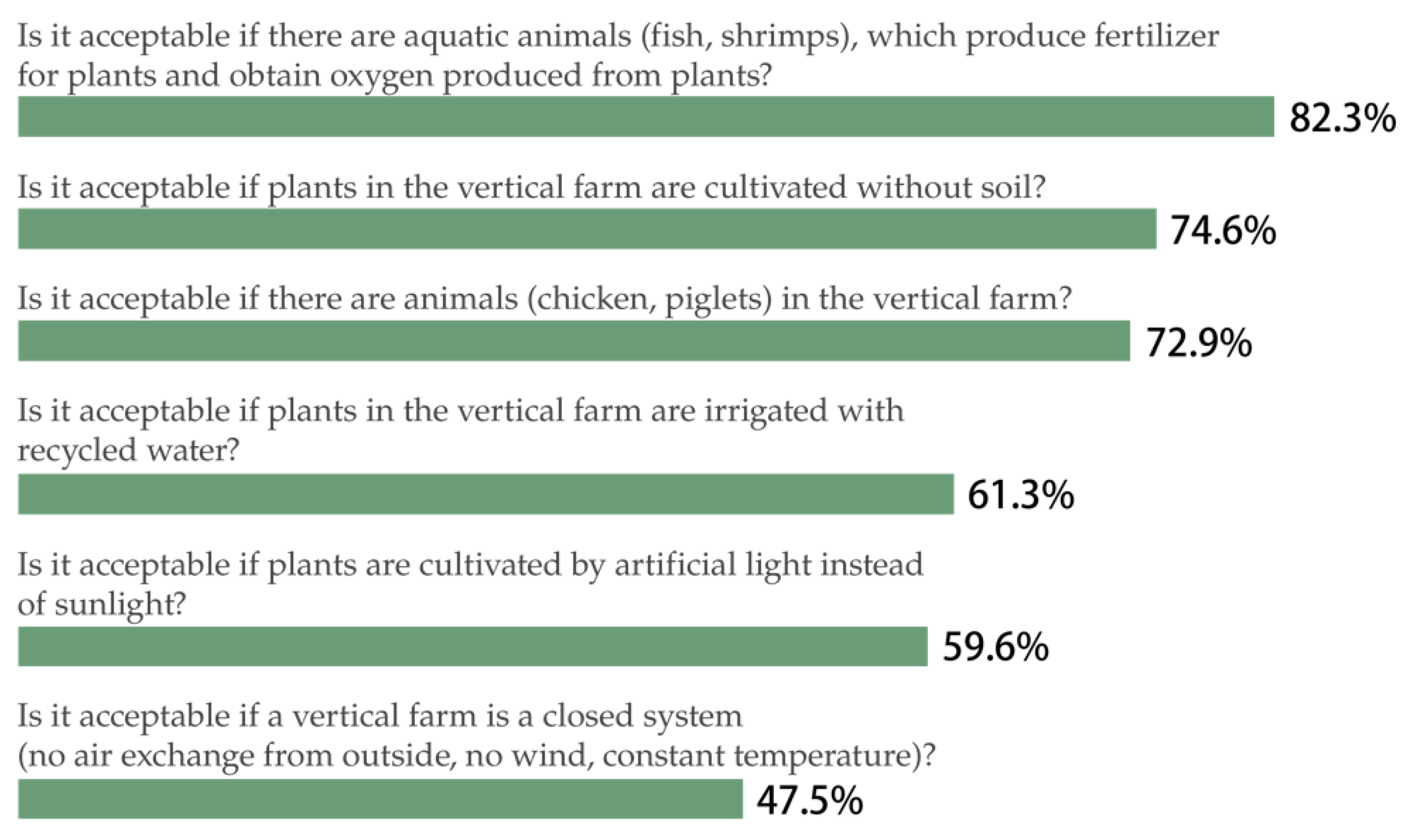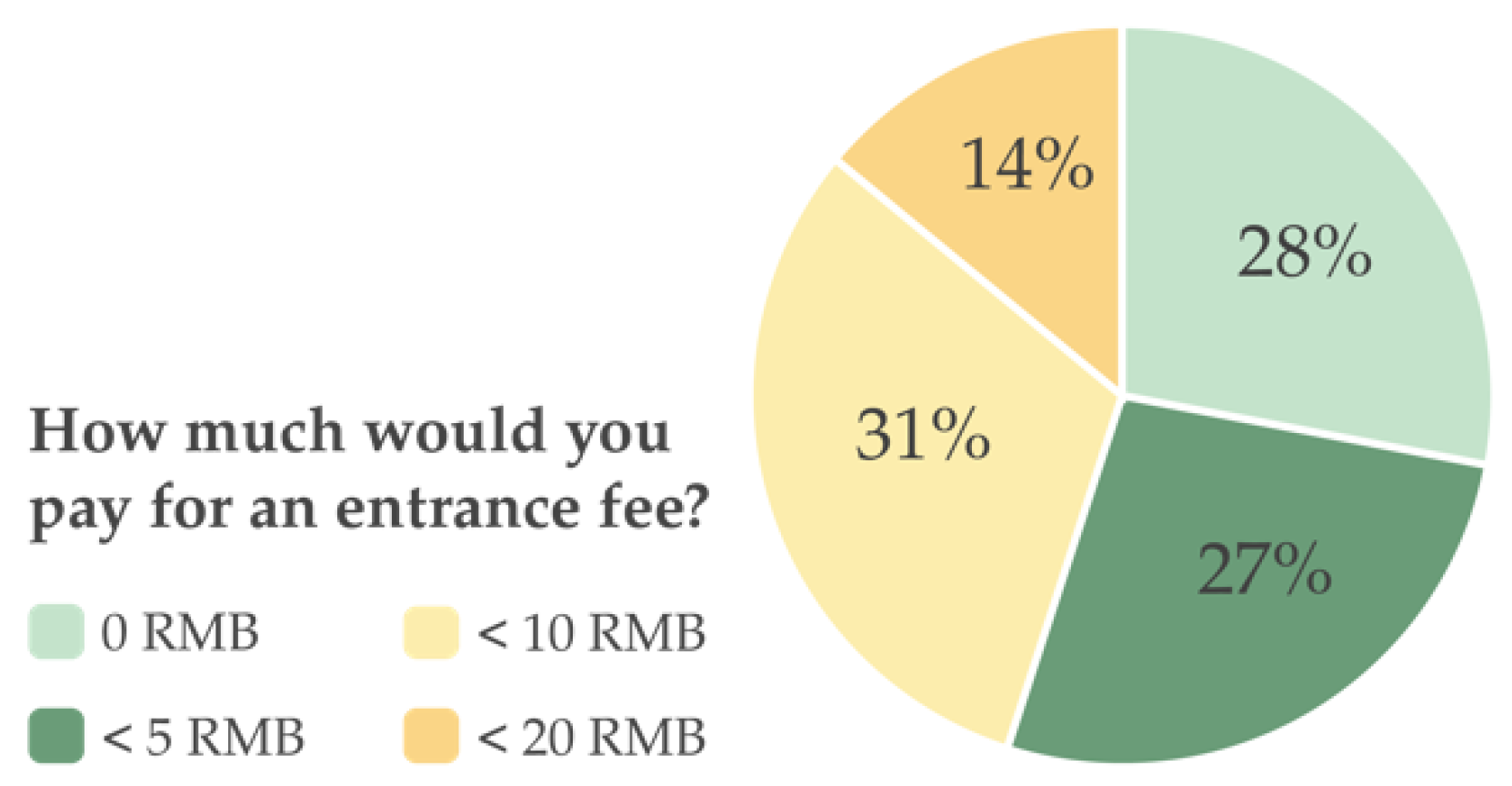To complement the consumer survey, the results of the expert interviews present the developmental perspectives by showing the promoting and hindering factors for the acceptance of indoor agritecture in Shanghai. The quantitative presentation of the corresponding quotes is used to illustrate the qualitative results.
3.2.1. Social Dimension
Within the social dimension, the interviewees expressed more promoting than hindering factors for the acceptance of indoor agritecture (
Table 7).
Considering the multifunctional effects of agritecture, the most frequently discussed factor was temporal influence, with most interviewees expressing that involvement in agritecture influences spaces, surroundings, and individuals’ perception of time. Some experts addressed that indoor agritecture saves consumers’ time due to its locality, as “Currently, our currency is no longer money, but time” (Economist, #3). A universal opinion was that indoor agritecture could slow down the pace of life through participation:
“No matter adults, children or old people, they have curiosities for agricultural things in the cities. […] Therefore, slow life is more about this state of mind. […]”
(Urban designer, #18)
Opinions on hindering factors included the following: “Low participation, too complicated for the community—all this has nothing to do with a slow life” (Agriculturalist, #8).
In terms of mental health, interviewees stated that indoor agritecture positively impacts citizens with the supply of, e.g., interactivity, healing effects, sense of accomplishment, relaxation, decompression, and happiness. Hindering factors included, e.g., citizens’ difficulties with enjoying indoor agritecture under high pressure in megacities.
Considering social awareness, promoting and hindering factors were almost equally quoted. The promoting factors included that citizens’ awareness about the importance of food safety and urban agriculture has been growing, and that the understanding of the technology utilized in indoor agritecture has been improving social acceptance. Other interviewees emphasized hindering factors such as the depreciation of agriculture by Chinese society, the high price of the produce from indoor agritecture, and the cognitive challenges through the high technology level.
Regarding the general value estimate, the interviewees agreed that indoor agritecture could be a supplemental form of food production, a remedy for food shortages, or additional welfare for the employees or residents of buildings. As hindering factors, interviewees indicated the potential trade-offs between commercial and social uses, security risks, and a lack of trust in the innovation itself.
Under the food topic, food safety was the focus of debate. One interviewee emphasized, “The food must be safe. If the quality of your food is harmful to people, in any case, it is harmful to urban agriculture” (urban ecologist, #5). Other interviewees stressed as hindering factors that the product quality from urban agritecture could not be guaranteed, as it was not naturally grown; moreover, that there is no certification system for this sort of produce; and that based on the current food industry, people have trust issues. Food culture was the only factor with more quotes regarding hindering than promoting factors. Interviewees suggested the promoting factor that the local food culture in Shanghai (located in South China) is beneficial for the social acceptance of indoor agritecture, because the South Chinese prefer leafy greens, whereas the North Chinese enjoy prefer fruit. Doubts about the taste were raised as a hindering factor. One interviewee indicated Chinese traditions:
“The Chinese have a deep attachment to the land, and this is much deeper than it is for foreigners.”
(Expert on rooftop farms and planting containers, #13)
It was argued that most Chinese are accustomed to conventional agriculture and low food prices in markets.
3.2.2. Economic Dimension
In the economic dimension, there were more quotes on hindering than promoting factors (
Table 8).
Regarding technology, the number of quotes on hindering factors was high. The factor of maturity was most frequently discussed, with the main argument indicating that the technology is still in its starting phase. It was stated that it is rarely profitable for plants other than herbs and lettuce. One interviewee expressed, “The more advanced the technology, the more vulnerable it is” (CEO of an edible landscape company, #10). The promoting factors included the belief in the technological maturity in China, the supply of optimal growth conditions without seasonal limits, and the expected decreases in logistics costs. The experts familiar with hydroponics supported as promoting factors the cleanness of hydroponics and its regulation, with arguments against soil pollution resulting from conventional agriculture, soil-based pest diseases, and high soil remediation costs. The hindering factors came from, e.g., doubt over the product quality through hydroponics, health impacts, and the maintenance of the hydroponics devices:
“I saw that there are tools for indoor farming on foreign websites. […] I have not tested it, but I think that it cannot be particularly healthy to grow things out of that. It cannot get sunlight because it is indoor. […] I think it is inappropriate for eating.”
(CEO of an edible landscape start-up, #15)
Investment was the second most discussed factor, with a high number of quotes on hindering factors. The experts deemed indoor agritecture as economically unsustainable, and referred to the requirement of high investments. In contrast, the promoting factors included that the high investment is affordable by setting high selling prices, that high investment helps avoid pirating of technology and devices, and that local logistics help save investment. The interviewee expressed the following: “[…] the investment is about the priority of efficiency: how to produce everything efficiently to maximize profits” (CEO of a planting machine start-up, #17).
The number of quotes on promoting and hindering factors regarding profitability was equal. Through the confidence in the technology and productivity, some experts foresaw its cost-effectiveness for customers. In comparison, others mentioned hindering factors regarding the potential investments and high levels of technology required (e.g., artificial lightning), holding the opinion that it would be difficult to make a profit.
Concerning productivity, promoting and hindering factors were expressed equally. Promoting factors included that indoor agritecture supplies efficiency through high-density planting in ideal growth conditions and that it provides nonseasonal produce. According to the interviewees, in terms of hindering factors, efficiency means industrial production, planting has many uncertainties that influence the yield quickly, and there have been no long-term successful cases of indoor agritecture. Decentralization of farms was regarded as low efficiency and productivity: “It is difficult for normal people to start (agritecture). They can only make small-scale ones due to many requirements and a lack of funds, technology, and support” (Sociologist, #6).
3.2.3. Ecological Dimension
From the ecological perspective (
Table 9), promoting factors were more prevalent in all three categories.
Most interviewees confirmed the positive ecological impact of indoor agritecture on urban sustainability, that it helps improve self-sufficiency within existing urban footprints, and accorded it with concepts like “eco city,” “pastoral city,” “sponge city,” and “greening city.” The experts agreed: “It is clear that cities also need nature” (Architect, #12). To create an effective growth environment, indoor agritecture needs to channel more CO2 from urban areas for photosynthesis, which, according to the experts, helps to reduce CO2 emissions and the urban heat island effect. Yet, there are also hindering factors: Indoor agritecture has no strong environmental impact due to its closed system, and it was until now unsustainable without solving all the problems in its system. One expert expressed:
“To tell the truth, this is pseudo ecology, as it is different from real ecology. It is controlled based on an artificial environment. It will have problems without maintenance, unlike a forest that becomes better if you don’t take care of it […].”
(CEO of an urban design start-up, #20)
Considering
resource occupation, the interviewees indicated the promoting factors that indoor agritecture decreases resource consumption by developing vertically with local logistics, that hydroponics utilize recycled water systems and nutrient solution explicitly, and that the controlled closed system helps save energy. The hindering factors expressed included that some technologies like lightning are energy intensive. The land resources for the construction of new indoor agritecture was doubted, based on the negative climate impact in the construction process [
36,
37] and the extraordinary limitation of land resources in Shanghai [see
Section 2.1]. Thus, the reconstruction and reutilization of old industrial buildings were advocated. Compared to low-tech farms using permaculture, the sustainability of high-tech farms was questioned.
The promoting factors about the ecological awareness implied improvements in environmental awareness and cognition, and the ongoing learning process about the sustainable life of citizens. A hindering factor was also noted:
“If a person has a few times the amount of money required to buy pollution-free products, there are two limitations. One is the disposable income limit, and the other is the knowledge limit.”
(Sociologist, #2)
It was argued that there has been no ecological education in Shanghai. The society still needs time to realize the importance of ecology.
3.2.4. Contextual Framework
In terms of the contextual framework within Shanghai, the quote number of promoting factors was significantly high (
Table 10).
Regarding governmental support, experts claimed hindering factors such as the government lacking awareness or interest in this area, as its current mission is to develop the economy and solve urgent survival problems. They implied that founders must have relationships with the government to receive cooperation or resources, otherwise the connection process is complicated and long. It was thought to be sufficient when the government is not against indoor agritecture, otherwise it would impact the market order. One expert gave an example that breeding poultry is forbidden in urban areas due to the bird and swine flus that occurred years ago in China. Therefore, the development of indoor agritecture is limited to supplying produce instead of meat. Currently, industrial policy support (e.g., discount for industrial electricity at night) is only for state-owned instead of foreign enterprises. Yet, the promoting factors included that the government in Shanghai has started promoting development in this area, which would bring social resources and improve social acceptance. The experts recommended a top-down development or collaboration with the companies that cooperate with the government to open the market. Possible policy support in architecture was also suggested:
“[…] The policy should support energy saving no matter how thick the wall is (built) and support the construction of internal public space by not calculating it into the plot ratio, then there will be many people trying agritecture […].”
(Architect, #9)
Regarding the current situation of indoor agritecture, some experts mentioned the hindering factor that there is no need to develop indoor agritecture, as agriculture in China supplies overcapacity. Additionally, consumer awareness was not high enough for the purchase of indoor agritectural products. The promoting factors included, e.g., the increase of organic restaurants and supermarkets in Shanghai, existing commercial agritecture cases, and the fast development of indoor agritecture in countries with scarce land resources (e.g., Japan, Singapore) or high demand for salad (e.g., the USA).
Concerning marketing strategies, some of the experts confirmed the maturity of the market. The development of indoor agritecture is driven by the increasing population and, hence, increasing resource conflicts. Due to food safety problems, citizens have a high demand for a direct connection with farmers. Publicity and operation, e.g., in conjunction with courses or workshops, were proposed as primary marketing strategies. The produce, devices, and relevant support services were suggested as trade options. The experts considered indoor agritecture a good selling point for real estate companies. Its construction in community centers or (sub-)CBDs would attract tourists and residents and improve consumption in the surrounding areas. As hindering factors, the experts involved in this area frankly agreed that indoor agritecture is currently a niche market, saying that only people who are idealistic would work in this area for little profit: “It is rather a concept, a kind of marketing that can attract more guests” (CEO of a planting container company, #14.)
Regarding target markets, the number of quotes on promoting factors was higher. Experts mentioned that indoor agritecture is attractive for diverse groups, such as elderly people, young people, families with children, those who are middle-aged, female consumers, well-educated people, white-collar workers, tourists, those with free time, those interested in technology, those who worry about food safely issue, those who care about their lifestyle, those who need direct connection with farmers without middlemen, or those who need a regular vegetable supply. One expert described their target market as follows:
“We aim at high-end supermarkets that sell groceries to foreigners. There, our vegetables can be sold at a high price. If you want, you buy it. If you don’t want it, we don’t care. The partnership with hotpot restaurants is also a good choice because salads taste delicious in hotpots […].”
(Vice-CEO of a vertical farm, #11)
However, some experts were concerned with the exclusiveness of some target groups.
From the architectural perspective, agritecture was considered to lend new design concepts to green architecture, help save energy, reduce emissions, and provide interaction. It was suggested to reconstruct the existing gray, negative, or public spaces for agritecture, which would enrich visual spatial effects. Agritecture could also be utilized in social welfare spaces. Nevertheless, hindering factors showed concerns with the architectural durability of reconstructing industrial buildings.
Most experts mentioned current regulations and standards for indoor agritecture as hindering factors. Some of the experts indicated the lack of control in terms of relevant laws and regulations over food quality and the production process, as well as the lack of consolidated organic certification and its relevant control system in China. It also lacks professional management: “From a broader perspective, agriculture looks simple, but if you would like to benefit, you need professionals to take care of it” (Agriculturist, #1). The experts emphasized that the two forms of indoor agritecture—roof greenhouses and facade farms—are illegal, according to current architecture standards. One promoting statement was that the existing standards convey the positive notion that indoor agritecture can provide a process of rebuilding trust with customers, as its produce is of good quality.
From the urban planning perspective, the promoting factors indicated that indoor agritecture diversifies the urban style, highlights the characteristics of cities, and creates new urban images, which were considered compatible with concepts such as “smart cities,” “garden cities,” or “pastoral lives.” Its food supplementation function was regarded as improving urban–rural relationships. Nevertheless, the hindering factors showed that indoor agritecture may reduce local urban characteristics and lead to homogenization. The following was advised:
“From an urban planning perspective, it is said that attention should be paid to domestic planning, but few have implemented this. This concept can be better accomplished from the top-down.”
(Vertical greening expert, #16)
Regarding the local conditions in Shanghai for constructing indoor agritecture, the experts expressed that Shanghai has a suitable cultural background for its development, since its citizens have an advanced level of consciousness.
“I think the timing is indeed mature for Shanghai, because there is demand from many consumers, which is why increasing organic restaurants and boutique supermarkets exist in Shanghai. That many foreigners living here has driven some local ideology from the upper class. Then, some middle class will definitely follow up; thus, the demand is guaranteed.”
(Urban designer, #19)
However, some experts identified hindering factors like the following:
“Shanghai is an extreme city and is one of a few mega-cities in the world, having a particularly dense population like Tokyo. The development of agritecture in these cities wastes human resources and the superior conditions of the port […].”
(Vertical greening expert, #4)
They claimed that Shanghai is sufficiently supplied with fresh vegetables and fruits from the neighboring provinces.
Reflecting on the academic gaps, the experts shared that there has been little research in China. Professionals had diverse opinions and an unclear consensus on urban agritecture:
“After 2010, academic recognition appeared in this field. Five or six years is not enough time to form a consensus. Landscapers call it ‘productive landscapes’; architects call it ‘vertical farms’, […]; we urban planners have some imported concepts such as ‘physical urbanism’ and ‘agricultural urbanism’. Therefore, there is no unified cognition in these fields.”
(Urban planner, #7)
It was corroborated that research on, e.g., its feasibility, technical potential, and relationship between the social acceptance and purchasing power would help enhance the social acceptance. Hindering factors showed that this area lays behind the domestic problems from mainstream major ones such as housing and transportation in urban planning.
To summarize the expert opinions, the top nine most repeated development strategies included (in descending order):
Political support plays a crucial role on the long-term development.
For the starting phase, miniaturized, personalized, and customized indoor agritecture based on local culture would be a good strategy.
The promotion of the concept improves the awareness of the public and developers.
To open the market, marketing, branding strategies, and developing characteristics should be utilized to build customer retention.
It is essential to build trust (stores need offline interaction) with the citizens.
The development demands experts, expertise, and technical support.
The long-term development relies on economic sustainability.
Indoor agritecture needs corporate involvement for its development.
There should be clear target groups as a customer base.
The six most repeated hindering factors regarding development strategies included:
Indoor agritecture needs long-term continuous care.
Indoor agritecture would be difficult to popularize (subjective acceptance, target markets, difficult reconstruction in existing buildings with unclear property rights).
Indoor agritecture could not be scaled up in the short term. It would take eight to 10 years.
The maintenance or management for indoor agritecture would be a challenge.
There is doubt over general feasibility.
It is difficult to modify people’s inherent living habits to accept indoor agritecture.
